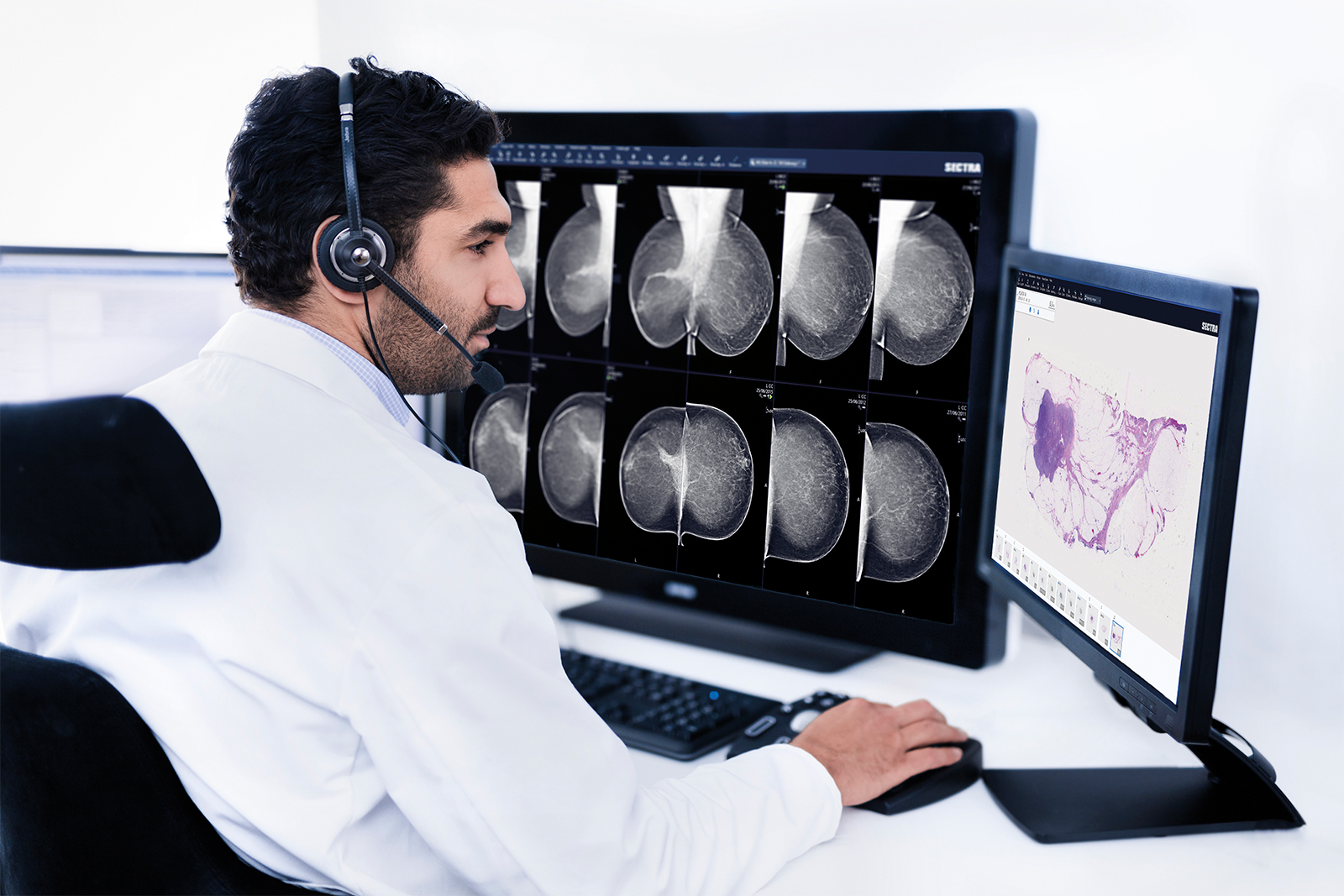Departmental technologies like PACS are changing and breaking free of their traditional roles, being redefined to respond to patient needs across the entire hospital, writes former NHS radiographer, Chris Scarisbrick, Sectra UK & Ireland.
The advent of the radiology picture archiving and communication system, or PACS, signalled an early and pioneering shift to digital within NHS hospitals some 15 years ago. As an NHS radiographer, and then PACS manager, during the early parts of this journey, I witnessed first-hand the end of working with restrictive light boxes and acetates, and the improved flow of information that resulted from the new technology.
It was an important departmental development, borne out of necessity, at a time when radiology was by far the largest producer of imaging data in the hospital. It was also a move that saw radiology departments across the NHS rapidly move ahead of many of their diagnostic counterparts in digital ways of working, with significant benefits for streamlined working that would ultimately benefit patient care.
Fifteen years later and PACS is no less important as a means of storing and quickly accessing crucial images and other related data that are essential for making diagnoses and supporting clinical decisions.
But as more and more disciplines across the hospital need rapid access to imaging and information and as a growing number of diagnostic disciplines embark on their own digital journeys, the role of PACS is accelerating away from being solely departmental specific, to being one that must serve cross enterprise needs and flows of both information and images.
When is a PACS not a PACS? Moving away from proprietary definitions to enterprise wide, patient centric technology
PACS, in its traditional sense, has faced criticism in the past over an apparent lack of vendor neutrality. But this old understanding of an outdated style of PACS is no longer relevant in the joined-up modern hospital where information must follow the patient. The very definition and constitution of PACS is changing to meet these modern needs.
It is true, some PACS vendors have historically used proprietary compression and communication, linking the software to specific modalities. Forwarding thinking PACS developers are however not going down this route, instead creating non-proprietary technologies that embrace standards in a very similar way to the vendor neutral archive (VNA).
PACS is quite simply being redefined around customer needs so that specialities can still retain the specific functionality that they need to do their jobs, but so that the technology can also be accessed across the enterprise to allow patient centric ways of working.
As the typical patient makes multiple trips around the hospital enterprise to various departments, most of these visits now have some manner of imaging or document attached to them. If we can pull all of that data into a single unified platform and display it as part of a common viewing toolset, then we can offer an incredibly powerful tool.
The reality is that hospitals are today still struggling with the logistics of managing many islands of data, where some disciplines are even still engaged in cutting and pasting from one system to the next, a way of working that carries inherent clinical risk. Hospitals now have a pressing business need to unify that data and present it back to the user in a patient centric factor.
This means that in 10 to 20 years there will be extraordinarily few departmental systems. Hospitals will look to procure common enterprise platforms that meet the needs of different specialities, and where there is collaboration between radiology, pathology, dermatology, ophthalmology, cardiology or any other clinical function in the hospital, along with the technology supplier, we can ensure that clinical needs are reflected in interoperable solutions.
Meeting clinical and IT requirements
Systems still need to be developed around customer needs, ensuring specialist functionality is not lost in an enterprise-wide system, so that radiology can still utilise all the diagnostic tools they are familiar with, or so that pathology, for example, can achieve the same efficiency increase seen in radiology since the dawn of digitisation, without the need for huge investments in their own pathology solutions with proprietary scanner bound software. Furthermore, enterprise wide technology must allow orthopods to carry out 3D templating, it must enable dental departments to view dental imagery in ways they are used and it must respond to the needs of users across the hospital. The more clinical use hospitals can get out of a solution, the better value for money healthcare organisations can generate. Listening to clinical staff and to those who work across diagnostic teams, is key to ensuring that workflows are not interrupted. Not rarely do we see healthcare organisations spending money on IT solutions that they don’t need and features that clinicians will not use instead of really analysing the needs of the organisation and implementing the best solution for that purpose.
There is a need to simultaneously link these requirements together through a combined PACS and VNA solution that is built on standards. Suppliers must therefore be able to respond to multiple customers at once – creating tools for clinical teams that, through standards, also meet the technical back end requirements of the IT team.
Working in this way has the potential to significantly reduce costs, where vendors are able to offer a single common enterprise platform that does not require hospitals to procure two systems to individually meet front end user needs and back end standards requirements.
Underpinning all of this is the patient who must be the key driver for technology change. Suppliers must offer a solution that provides clinical teams across the hospital with the ability to be as effective as they can.

